People like Mahesh
It is far from easy to survive in the highly competitive tourism market in Nepal. Under normal circumstances, but all the more after the earthquake last spring. There are hundreds of trekking and expedition agencies in Kathmandu that compete to get any clients. Most of them are small companies, and the owners often live from hand to mouth. Small entrepreneurs like my friend Mahesh Kumar Budha suffer most from the economic consequences of the earthquake. The government estimates that the tourism market has slumped by 50 percent, local operators assume that it is up to 70 percent.
![]() read more
read more
Dawa Steven Sherpa: “Ke garne! We carry on!”
There is a jinx on it. Two spring seasons on Everest in a row remained without summit successes (I ignore those of the Wang Jing team in 2014 because they were flown by helicopter to the high camp). In 2014, all commercial expeditions were cancelled after an avalanche had killed 16 Nepalese climbers in Khumbu Icefall. This year, the devastating earthquake in Nepal triggered an avalanche from the seven-thousander Pumori hitting Everest Base Camp and killing 19 mountaineers and support staff. Once again the spring season ended before it had really begun. What does this mean for the Sherpa people?
I called Dawa Steven Sherpa. Along with his father Ang Tshering Sherpa, the president of the Nepal Mountaineering Association (NMA), the 31-year-old is managing “Asian Trekking”, a Kathmandu-based leading operator for expeditions and trekkings in the Himalayas. Dawa Steven scaled Everest twice (in 2007 and 2008) and in addition the eight-thousanders Cho Oyu (2006) and Lhotse (2009). Under his expedition leadership more than 150 climbers have summited Everest. But Dawa Steven is also a tireless fighter for environmental and climate protection in the Himalayas. Furthermore he is leading “Resilient Homes” , a project of the “Himalayan Climate Initiative” to help earthquake-affected communities to rebuild their houses and other buildings – one more reason to talk to him about the current situation in Nepal.
![]() read more
read more
Steck: “The only way I can help the people of Nepal”
There are only 20 days left until Ueli Steck will return to Nepal. To the country where the 38-year-old Swiss top climber in the same year celebrated his probably most spectacular success as an extreme climber as well as the greatest fear of death that had nothing to do with mountain dangers. In spring 2013, a group of angry Sherpas attacked Ueli and his teammates Simone Moro and Jonathan Griffith in Everest high camp and threatened them with death. In fall 2013, Steck reached the 8091-meter-high summit of Annapurna, the eight-thousander with the highest fatality rate: solo, via the extremely dangerous South Face, on a partly new route, as always without bottled oxygen. It took Ueli only 28 hours to climb up and down.
This summer, he proved once again that he is able to climb mountains lickety-split, when he – as reported in my blog – scaled all 82 four-thousanders of the Alps within 62 days and overcame the distance between the mountains without engine power: by hiking, cycling or paragliding. I talked to Ueli about his tour de force through the Alps – and also about his upcoming exciting project in Nepal: on Nuptse, within sight of Mount Everest.
![]() read more
read more
Nepal now? Absolutely!
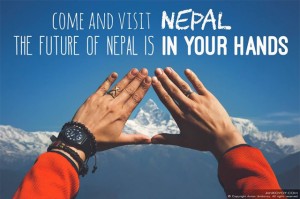 The financial aftershock is probably unavoidable. But it is important to keep the vibrations for Nepal within limits. The fall trekking season is just around the corner, and the government anticipates a dramatic 50 percent slump in tourism. “The number of foreign tourists has declined after the earthquake”, says Tourism Minister Kripasur Sherpa. “This is a heavy burden, because tourism is very important for the Nepalese economy and people.” The Government points out that international independent earthquake experts have declared the most popular trekking routes in Nepal, the Annapurna Circuit and the Everest Base Camp Trek, for nonhazardous. “Tourists don’t take higher risks any more”, says Kripasur Sherpa.
The financial aftershock is probably unavoidable. But it is important to keep the vibrations for Nepal within limits. The fall trekking season is just around the corner, and the government anticipates a dramatic 50 percent slump in tourism. “The number of foreign tourists has declined after the earthquake”, says Tourism Minister Kripasur Sherpa. “This is a heavy burden, because tourism is very important for the Nepalese economy and people.” The Government points out that international independent earthquake experts have declared the most popular trekking routes in Nepal, the Annapurna Circuit and the Everest Base Camp Trek, for nonhazardous. “Tourists don’t take higher risks any more”, says Kripasur Sherpa.
![]() read more
read more
Money for relief flights in Nepal runs short
The World Food Programme (WFP) has sounded the alarm. If the “United Nations Humanitarian Air Service” (UNHAS) does not receive additional money, the helicopter relief flights for the earthquake victims in Nepal have to be stopped at the end of August. According to the WFP, which manages the UNHAS, there is a shortfall of more than nine million US dollars to continue the flights as scheduled until the end of October.
![]() read more
read more
Get ready to trek to Everest!
A cautious all-clear for the Everest Base Camp trail. “None of the major suspension bridges appear to be affected by new geotechnical hazards as a result of the earthquake”, says the report of a group of mountain guides and engineers of the US based agency Miyamoto International which is specialized on earthquake damage. “Much of the trail and most of the rock retaining walls (both above and below) the trail are undamaged. We have observed very little foundation damage to buildings.” At the end of June the team had assessed the condition of the trail from the village of Lukla to Everest Base Camp after the devastating earthquake of 25 April and the aftermaths. 83 percent of the observed lodges and houses were given a green tag, meaning that they were undamaged or hardly affected. And the others?
![]() read more
read more
Too young for danger of death
Tyler Armstrong wants to break the record. Or do his parents want him to do it? Or all three? Anyway, the family of the eleven-year-old (!) US-American has announced that Tyler will try to scale Mount Everest in spring 2016. Crazy! Then Tyler would be twelve years and four months old – thus one and a half years younger than his compatriot Jordan Romero, who climbed Everest in 2010 from the Tibetan north side and who since that time is registered in the record lists as the youngest climber ever on the highest mountain on earth.
![]() read more
read more
No fall expeditions to Tibet
China is closing Tibet for climbers for the rest of this year. “That is correct”, Dawa Steven Sherpa from the Nepalese expedition operator Asian Trekking confirms to me by email. “The Chinese authorities have decided not to issue permits for climbing in the autumn season in fear of further seismic activity telling that the mountains may be in a dangerous condition. They will issue climbing permits from 2016.” Furthermore, says Dawa Steven, the road that connects Nepal and Tibet, is still closed as it is under repair after the earthquake. “That means that equipment and logistics for the expeditions would not be possible to be transported via Nepal.”
![]() read more
read more
Education in tin sheds
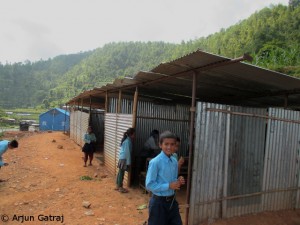 A return to normal is difficult while you have to live in ruins. “The earthquake has destroyed almost all the houses”, Arjun Gatraj wrote to me from Thulosirubari in Sindhupalchowk District. The village is about 40 kilometers as the crow flies from the Nepalese capital Kathmandu, but is only accessible by a gravel road. “The people are struggling to make ends meet. They live from hand to mouth”, Arjun said. According to him, the devastating 25 April earthquake killed about 75 people in Thulosirubari. Seven of the victims were students of the “Gerlinde and Ralf School”, but they didn’t die at school. “When I heard about the earthquake, I had many familiar people of Nepal in my mind: friends, good friends, and of course the many children in the various schools of the German aid organization Nepalhilfe Beilngries, also the students of the school in Thulosirubari”, says Gerlinde Kaltenbrunner. “Then my thought was immediately: Saturday is no school, thank goodness!” With their financial commitment, the extreme climbers Gerlinde Kaltenbrunner and Ralf Dujmovits had made it possible at all to build the school.
A return to normal is difficult while you have to live in ruins. “The earthquake has destroyed almost all the houses”, Arjun Gatraj wrote to me from Thulosirubari in Sindhupalchowk District. The village is about 40 kilometers as the crow flies from the Nepalese capital Kathmandu, but is only accessible by a gravel road. “The people are struggling to make ends meet. They live from hand to mouth”, Arjun said. According to him, the devastating 25 April earthquake killed about 75 people in Thulosirubari. Seven of the victims were students of the “Gerlinde and Ralf School”, but they didn’t die at school. “When I heard about the earthquake, I had many familiar people of Nepal in my mind: friends, good friends, and of course the many children in the various schools of the German aid organization Nepalhilfe Beilngries, also the students of the school in Thulosirubari”, says Gerlinde Kaltenbrunner. “Then my thought was immediately: Saturday is no school, thank goodness!” With their financial commitment, the extreme climbers Gerlinde Kaltenbrunner and Ralf Dujmovits had made it possible at all to build the school.
![]() read more
read more
Aid project: School up!
It looked as if the magician David Copperfield had staged one of his grand illusions. “The school was much smaller than I remembered it”, Ralf Dujmovits tells me. “First I didn’t even realize that the ground floor had just slumped down. The upper parts of the building were still standing. Only when I got loser, I saw the extent of damage. That really brought tears to my eyes.” Germany’s most successful high altitude climber visited the “Gerlinde and Ralf School” in Thulosirubari one and a half weeks after the devastating earthquake in Nepal. Gerlinde Kaltenbrunner and Ralf Dujmovits had given financial support to the project of the German aid organization “Nepalhilfe Beilngries” and thus had made it possible that the school had been opened in 2009. “If you suddenly realize that the building has to be demolished, you just begin to cry”, says Ralf. You all can help to rebuild the school by supporting the campaign “School up!”.
![]() read more
read more
More differentiated, please!
When can you call it normality again after a state of emergency? Obviously it depends on the way of perception. “Nepal is safe, don’t worry! This is our clear message for today”, said Bhesh Narayan Dahal, head of the governmental department that is responsible for the preservation of the world heritage sites of Nepal, at the beginning of the week. Temples in Kathmandu, Patan and Bhaktapur, which had been badly damaged by the earthquake on 25 April, were re-opened with a ceremony. But even the government seems to feel uneasy about it.
![]() read more
read more
Don Bowie: “Still villages in Nepal with almost no aid”
He has just stayed there – to help. When the devastating earthquake hit Nepal on 25 April, the Canadian climber Don Bowie was in Base Camp at the foot of Annapurna. For ten years, Don is climbing on eight-thousanders. By now he has scaled three of them, all without supplementary oxygen: K 2 (in 2007), Gasherbrum I (2010) and Cho Oyu (2011). After the tremors, the 46-year-old decided spontaneously to cancel the expedition and to use his skills as high altitude climber and mountain rescuer to help the earthquake victims in remote villages of Nepal. Since then Don is almost non-stop on the road in the mountains of the Himalayan state. On the Internet, he is asking for donations to finance his relief campaign. I contacted Don Bowie in Nepal.
Don, where are you staying right now?
I am based out of Kathmandu but I am now working in many districts – Gorkha, Nuwakot, Rasuwa, Sindhulpachowk, Dhading, and Dolakha.
![]() read more
read more
Taxes on relief goods – what’s the point of that?
There is considerable indignation. Since British media reported that the Nepalese government put an income tax of 15 to 30 per cent on relief goods for earthquake victims, the authorities in Kathmandu are subjected to sharp criticism in the social networks. The guideline that tents and tarpaulin were custom free had expired on 3 June. A week ago, government officials had announced that relief goods could be still imported without paying taxes, but only if they would then be distributed by governmental organizations. “An organization which wants to distribute imported goods itself has to pay full customs duty”, said Surya Sedai of the Department of Customs. “This is to minimize the risk of smuggling.” Some international organizations already complained about harassment. On the internet, votes are collected for a petition to Nepal’s Prime Minister Sushil Koirala to “stop levying taxes on materials imported to aid sufferers of the Nepalese earthquakes”. I talked about the topic with German aid organizations.
![]() read more
read more
Nepal hopes for comeback in fall
“Come back! So that Nepal can make a comeback.” So you could overwrite the appeals of those who are living from tourism in Nepal or have to do with it. The trekking and expedition operators from abroad send a signal that they want to realize most of their trips that they had planned for the post-monsoon season before the earthquake hit the country on 25 April. “The devastating earthquake has shaken the life in Nepal, but slowly life is returning to normality”, Dominik Mueller, head of German operator Amical alpin, wrote.
![]() read more
read more
Temba Tsheri Sherpa: “I lost my business”
Temba Tsheri reached the summit of Mount Everest when he was 16 years and 14 days old. The Nepalese schoolboy from Rolwaling Valley had joined a French team that climbed from the Tibetan north side to the top of Everest. Then, in 2001, he was the youngest climber ever who had scaled the highest mountain on earth. (Nine years later he was followed by 13-year-old American Jordan Romero.) In spring 2000, Temba had tried to climb Everest from the south side. Just below the summit he had had to return, because he had lost too much time because of a traffic jam at the Hillary Step. He had lost five fingers due to frostbite.
Later Temba Tsheri Sherpa studied at the University of Wuhan in China and started his own business, organizing expeditions. When the devastating earthquake struck Nepal on 25 April, he was the managing director of “Dreamers Destination”, an operator based in Kathmandu that had a large expedition group on Everest. The huge avalanche from Pumori, that was triggered by the earthquake and hit Everest Base Camp, killed three of Temba’s foreign clients and two Nepali staff members. I asked the 30-year-old Sherpa about the situation in his homeland after the earthquake.
Temba, what is your personal balance of the earthquake disaster – or in other words: What have you lost?
![]() read more
read more



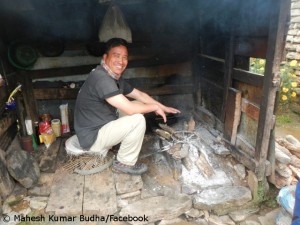



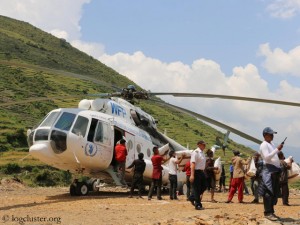
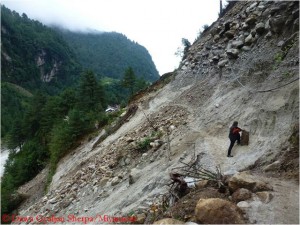
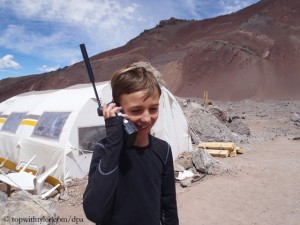
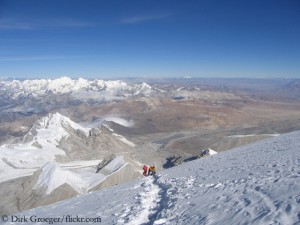
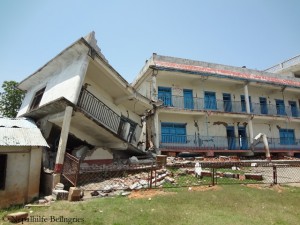
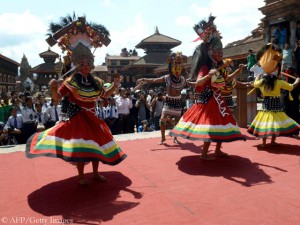
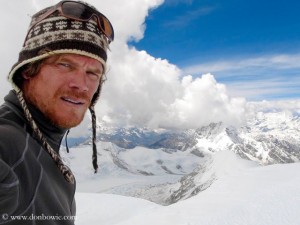
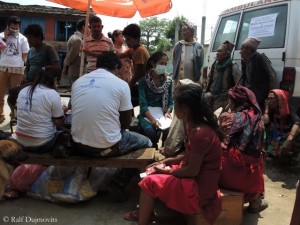
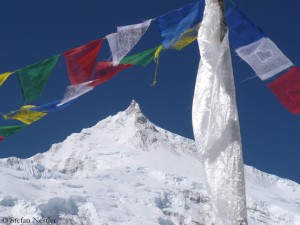
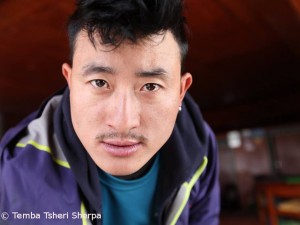





Feedback